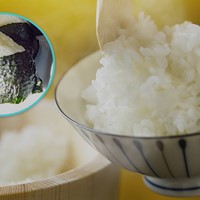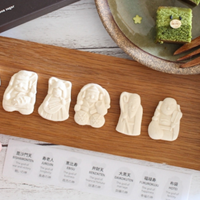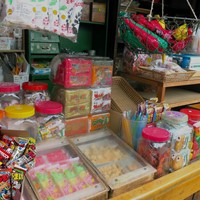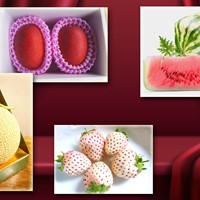Tempura: Traditional Japanese Food with Foreign Roots

This page contains affiliate links.
From the deli sections of local supermarkets to the exquisite menus of high-end restaurants, tempura with its delicate taste seems to be ubiquitous in Japan, and it certainly deserves its popularity. Covered in airy batter and deep fried in oil, this traditional Japanese food with foreign roots can be made of a variety of ingredients such as vegetables, seafood, etc., offering plenty of options to choose from. In this article, we will explore tempura including its history, popular varieties, dishes, and more.
If would like to try tempura and looking for an eating establishment serving it, be sure to check Japanese restaurant guides in this article. We also have many articles covering Japanese food including oden, nabe, tsukemono, natto, wagashi, and more.
What is Tempura?

Tempura is a traditional Japanese food with Portuguese origins. It is made by dipping vegetables, seafood, or other ingredients into batter before deep frying in oil. While you can enjoy tempura as a main dish, it also makes a delicious side dish, a filling for onigiri (rice ball), a topping for a donburi (rice bowl), etc.
Due to historical and geographical factors, tempura has "Kanto" and "Kansai" styles. Kanto style relies on batter with eggs, sesame oil, and is served with tentsuyu sauce as well as grated daikon. On the other hand, Kansai style tempura uses batter without eggs and is cooked in salad oil. Furthermore, it is served with salt. These are some of the traditional differences and nowadays eating establishments may employ various cooking methods blurring geographical and historical differences. To explore more distinctions between Kanto and Kansai food cultures, please check this article.
History of Tempura
Although the first written mention of tempura dates back to 1669, its history started a bit earlier in 16th century. It was the time Japanese began interacting with the West following the arrival of three sailors from Portugal in 1543. As the result of interactions with Portuguese, many things were introduced to Japan including a matchlock gun and the cooking method of covering ingredients with flour and frying in oil.
The origins of tempura can be traced back to 16th century Nagasaki tempura. In the next century, tempura spread to Kansai where it became vegetable-centered. Later, it reached Edo, where it relied on seafood and became an affordable street food thanks to the increased production of oil.
Over time, stores specializing in the preparation of this delectable food opened one after another, improving cooking methods and elevating tempura from street food to a luxurious treat. However, it was still a long time till tempura would spread all over Japan. Everything changed following the Great Kanto Earthquake in 1923, which struck Kanto Region with a magnitude of 7.9 causing devastating destructions and leaving many people dead and missing. It caused internal migration which contributed to the spread of tempura to various regions of Japan. Nowadays, tempura can be enjoyed throughout Japan in various forms including as an inexpensive dish at a local supermarket, an affordable meal at a chain restaurant, or a luxurious treat for a special occasion at a high-end specialty store. You can even purchase frozen tempura on the websites such as Amazon.
Types of Tempura
Given that so many vegetables, seafood, etc., can be turned into tempura, one may even wonder what cannot make for a great ingredient for this traditional Japanese dish. Below, we would like to list some of the most common varieties of tempura.
Ebi (Shrimp) Tempura

One of the first ingredients that comes to mind when thinking of tempura is a shrimp or ebi in Japanese. It is extremely popular and is very often included in tempura moriawase (tempura assortments), tendon (rice bowls with tempura), etc. Ebi tempura is typically served without a head, though some restaurants may serve it with one. If you do not mind seafood, shrimp is highly recommended to try for everyone exploring the world of Japanese tempura.
Kabocha (Pumpkin) Tempura

There is a great variety of tempura made of vegetables, and pumpkin (kabocha in Japanese) is one of the most common ingredients. Pleasantly sweet and deliciously crispy, kabocha tempura can be often found in supermarkets and restaurants. When it comes to vegetables, there are also many other delicious tempura made of renkon (lotus root), nasu (eggplant), etc.
Maitake Tempura

Maitake is a sort of mushroom that is a popular tempura ingredient. Besides maitake, there are also other varieties of mushrooms turned into tempura such as shiitake, eringi, etc. To learn about Japanese mushrooms, please check here.
Satsumaimo (Japanese Sweet Potato) Tempura

One of the most popular tempura ingredients is satsumaimo (Japanese sweet potato). Satumaimo tempura is thinly cut and has a unique sweet flavor that will leave you craving for more. To learn about Japanese sweet potatoes, be sure to check this article.
Ika (Squid) Tempura

Squid or Ika in Japanese is another type of seafood tempura. Although not as popular as shrimp, you can easily find it in supermarkets and eating establishments in Japan.
Toriten (Chicken Tempura)

While meat is not represented as extensively as seafood and vegetables, chicken tempura is a popular variety originated in Oita Prefecture. The cooking process is a bit different as it involves pre-seasoning.
Kakiage

Easily recognizable for its round shape, kakiage is a mix of ingredients such as vegetables, seafood cut into small pieces. From supermarkets to restaurants, you can find kakiage offered in a variety of places in Japan.
Tempura Dishes
There are many delicious Japanese dishes that make use of tempura. From set meals to rice bowls, tempura can be enjoyed in a variety of ways.
Tempura Teishoku (Set Meal)

Teishoku or set meals are a popular way to enjoy Japanese food and tempura is no exception. As part of tempura teishoku, you will be served rice, side dishes, miso soup, and of course tempura.
Tenzaru, Tenseiro, and Tempura Soba

Tenzaru and tenseiro soba refer to cold buckwheat noodles with a dipping sauce, served with tempura on a separate plate. Tenzaru soba, as opposed to tenseiro soba, generally comes with nori seaweed, though it may vary depending on the restaurant. On the other hand, tempura soba is hot soba in a broth topped with tempura. When it comes to noodles, tempura can also accompany udon, which is a rather thick type of noodles with deliciously chewy texture.You can learn more about various types of Japanese noodles in this article
Tendon

Another popular way to enjoy tempura is to order tendon. Tendon is a donburi (rice bowl) with tempura placed on top and sauce poured over it. Popular toppings include shrimp, Japanese sweet potato, pumpkin tempura.
Tenmusu

Originated in Mie Prefecture and known as a specialty of Nagoya Prefecture, tenmusu is a variety of onigiri with shrimp tempura. It is also a fantastic way to savor tempura when you do not have much time for a meal at a restaurant and just need to grab a quick bite.
Savoring Tempura

Now it is time to explore how to savor tempura. Depending on the dish, there may be different ways of flavoring. However, when it comes to tempura as a separate dish, the most common way is arguably by dipping it into tentsuyu sauce. The sauce is made of mirin, soy sauce, dashi, sugar, etc., and you can also choose to add grated daikon to it. The other common way is to use salt. Matcha salt is also a popular option.
If you visit a specialty store where tempura is served in turn to you as part of the course, you would just need to go with the flow. However, in case of a plate full of tempura, there is a recommended order to follow. You would start from the ingredients with a lighter taste such as shrimp and then proceed to those with a stronger flavor such as pumpkin. Generally, tempura with lighter flavor will be placed closer to you, and those with stronger taste will be in the back. If you are not sure about manners for using chopsticks, be sure to check "Chopstick Etiquette in Japan : DOs and DON'Ts".
Can you Make Tempura at Home?
Tempura can be easily made at home. You would need to have ingredients such as shrimp, pumpkin, etc., that you would like to turn into tempura by coating in batter and deep frying in oil. When it comes to batter, the easiest way is to use commercially available tempura flour, which only requires mixing it with water (please follow instructions written on the package). However, if you would prefer to make batter yourself, you would need water, egg, and flour. In this case, all purpose flour (hakurikiko in Japanese) can be recommended.
At the time of making batter, all ingredients should be cold. First, you crack an egg and put its content in a bowl, which is followed by adding cold water and mixing. Then, you would need to add flour and continue mixing. Avoid stirring excessively at this stage. Batter with a few lumps is just what you need! To achieve better results, using chopsticks can be recommended.
When heating oil for deep frying, avoid too high temperatures and keep it around 160-180°C. After coating ingredients in batter, proceed to deep frying them inside heated oil. The duration of frying largely depends on the type of ingredient. To make the cooking process more convenient, you can consider purchasing a pot for frying tempura.
If you would like to enjoy tempura with tentsuyu dipping sauce, you can make it yourself or purchase online. Here we provided a general overview of the process for making tempura. For information on amount of ingredients needed and other details, please search for a tempura recipe that would suit your taste: "Free English Websites for Japanese Food Recipes".
Trying different tempura is a delicious way to explore Japanese food culture, and we hope this article will help you to enjoy this traditional food with its variety of ingredients and dishes.
















